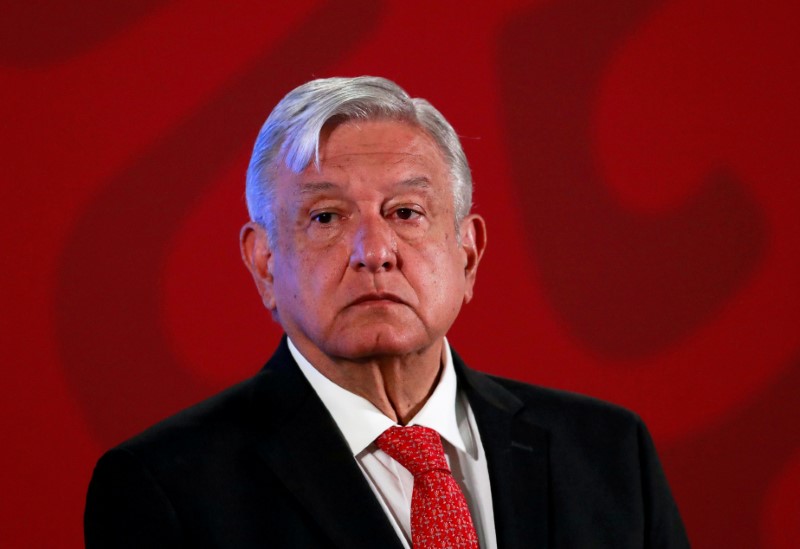By Adriana Barrera and David Alire Garcia
MEXICO CITY (Reuters) - The Mexican government's fight with private power firms over access to the grid owned by state-run Comision Federal de Electricidad, or CFE, threatens further legal conflict over new plants as well as the country's transition to a greener future.
The spat directly affects more than $6 billion (£4.77 billion) in partially or already built wind and solar power plants and the grid's technical stability. President Andres Manuel Lopez Obrador's push for a stronger state role in the energy sector also could strike another blow to his already shaky reputation with foreign investors.
Canada and the European Union have weighed into the fight in support of their investors, which include Spain's Iberdrola (MC:IBE) and France's Engie (PA:ENGIE), that have invested in the Mexican power sector.
LEGAL BATTLES
CENACE, the grid operator, triggered the battle in late April by abruptly moving to prioritize system reliability over cost even though it had been designed several years ago to favor lowest-cost power regardless of supplier.
The same order put a freeze on 44 renewable power plants that were in the process of coming online.
It cited the coronavirus pandemic as a justification given falling demand and the need to ensure uninterrupted supply that it argued was being compromised by intermittent wind and solar plants.
The order had the effect of favoring CFE plants that burn fossil fuels, especially natural gas but also highly polluting fuel oil, which state-run oil company Pemex produces at its aging refineries. Critics allege the government's true agenda is helping Pemex ease its glut of oil which can no longer be used by the shipping industry due to international regulations enacted earlier this year.
Several firms and environmental groups have filed legal challenges to CENACE's order, which judges have temporarily suspended as the legal process continues.
In a subsequent development, Mexico's Energy Ministry last month issued a decree to give the state more say over who can generate electricity and how much, again citing the pandemic as a rationale.
MORE GOVERNMENT CONTROL
Lopez Obrador, a leftist energy nationalist who has pledged to avoid rate hikes, has said his predecessor's 2013/2014 energy reform was designed to cripple both Pemex and the CFE. That reform widened an already open power generation market, while reserving transmission and distribution for the CFE.
Manuel Bartlett, the CFE's chief and Lopez Obrador's ideological ally, told Reuters last month that previous policies were subsidizing renewable power producers by forcing the CFE to absorb costs associated with transmission and maintaining grid stability.
He also blasted what he described as the previous administration's decision to allow companies to build power plants without adequate planning and called on private firms to pay more for transmission and the CFE's baseload power costs.

Since then, another energy regulator issued a resolution in line with Bartlett's call, setting higher transmission rates for private producers. The new rates have not yet been published.